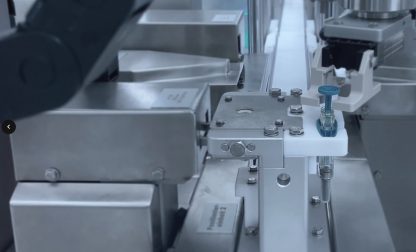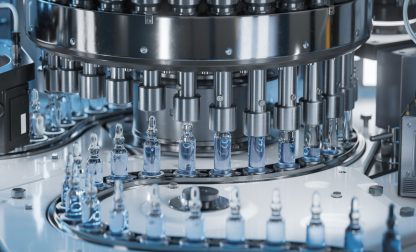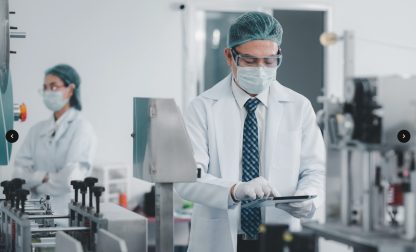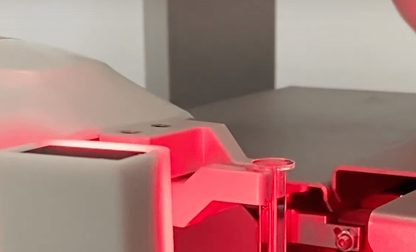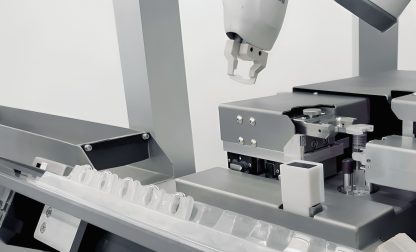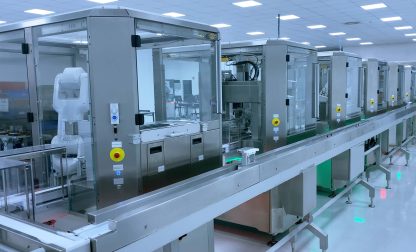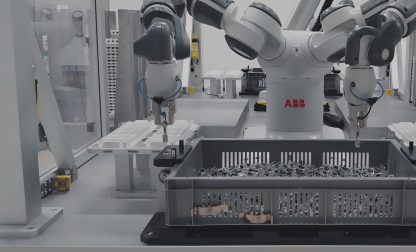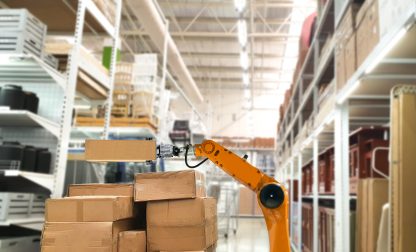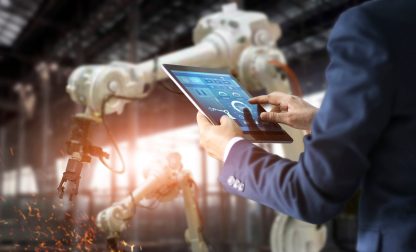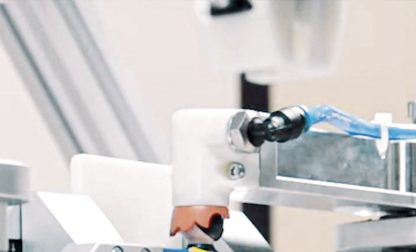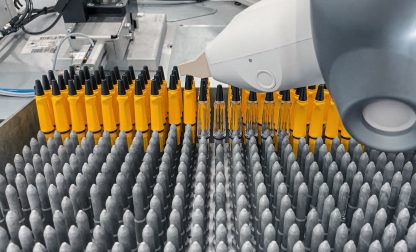Robotics in the Pharmaceutical Industry
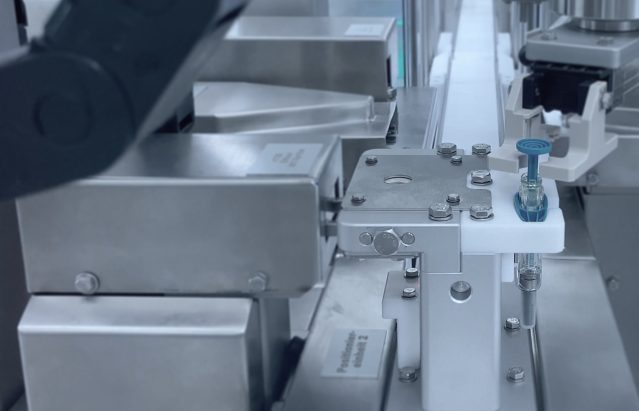
Robotics in the pharmaceutical industry are involved in various tasks throughout the manufacturing process, from analyzing gene sequences in laboratories to dispensing medication and assembling medical devices on production lines.
The significance of this technology is underscored by compelling statistics; a study by Grand View Research predicts that the global market for pharma robotics will reach USD 357.9 million by 2030. The market is expected to expand at a CAGR of 8.7% from 2023 to 2030, highlighting the growing importance of robotics in the pharmaceutical sector.1
This article defines process automation with robotics in context with the pharmaceutical industry and explores the operational roles of robots, shedding light on the specific tasks they perform and the tangible benefits they provide.
What is Automation in the Pharmaceutical Industry?
Automation in the pharmaceutical industry refers to the integration of advanced technologies, particularly robotic systems and intelligent processes, to streamline and optimize various aspects of drug manufacturing.
It involves the use of automated solutions across the production line, from drug development to secondary packaging and distribution, aiming to enhance efficiency, precision, and overall operational effectiveness. The implementation of automation in the pharmaceutical sector represents a significant shift towards modernizing manufacturing processes, reducing manual intervention, and ensuring a higher level of accuracy in pharmaceutical production.
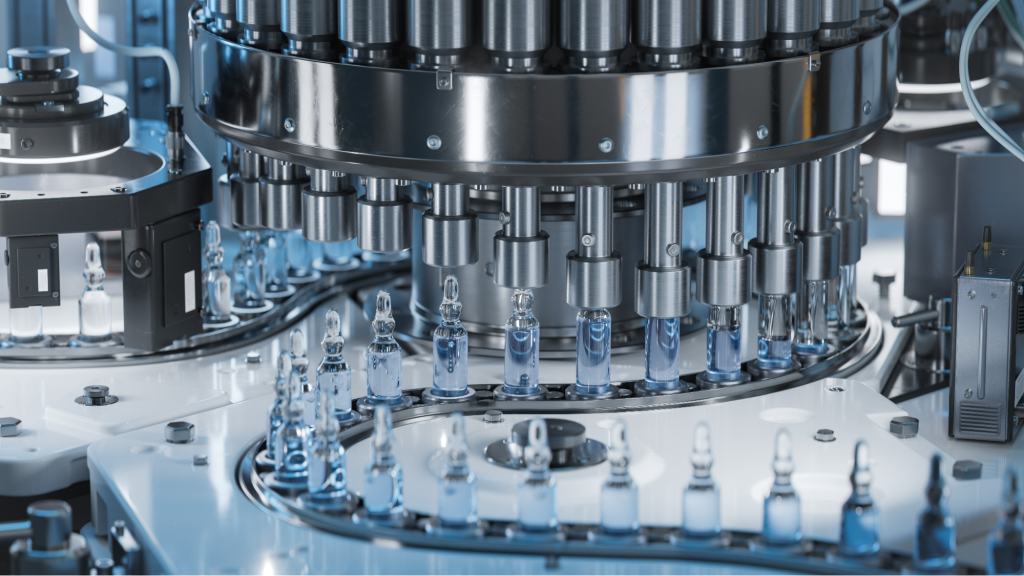
How are Robots Used in Pharmaceutical Manufacturing?
Robotics allows automating various stages of the production process. From initial laboratory automation to bin picking of bulk material and the assembly of medical devices, robots bring unparalleled precision to pharmaceutical processes. Collaborative robots (cobots), mobile robots, and industrial robots contribute to a versatile and efficient manufacturing environment.
Robotic solutions optimize production speed and enhance quality, ensuring the manufacturing of pharmaceuticals meets stringent standards. Pharmaceutical robots further execute repetitive tasks in cleanroom environments, addressing concerns about contamination risks.
Here’s an overview of how robots are used in pharmaceutical manufacturing:
- Drug Formulations
- Bin Picking
- Pick-and-Place Tasks
- Palletizing
- Packaging
- Medical Device Assembly
- Fill & Finish Vials, Syringes
- Cleanroom Operations
- Quality Control and Testing
- Medical Device Programming
- Machine Tending
Advantages of Robots in the Pharmaceutical Industry
The integration of robotics in the pharma industry brings a multitude of advantages, contributing to the overall advancement of the sector. Here are some key advantages of using robotics in the pharmaceutical industry:
1. Enhanced Efficiency
Robotics streamline and automate various tasks, significantly increasing the speed and efficiency of pharmaceutical production processes. The implementation of robots further expedites routine tasks, contributing to faster data collection and accelerated clinical studies.
2. Improved Quality
Robots, with their precision and repeatability, ensure a high level of accuracy in dosing, assembling, and other critical tasks. Automated systems minimize human errors and the risk of contamination. This not only reduces the margin for error in manufacturing but also fosters the implementation of rapid techniques for developing revolutionary medicines with improved quality.
3. Reduced Downtime
Automated systems, including robots, consistently and reliably perform tasks without the need for breaks, contributing to minimized downtime and ensuring continuous and efficient production. This aligns with the operational goal of achieving maximum return on investment.
4. Enhanced Regulatory Compliance
Automation becomes a cornerstone in meeting complex regulatory compliance requirements like ISO or GMP requirements. By minimizing the potential for human error, these robots contribute to a more streamlined adherence to stringent industry regulations.
5. Accelerated Time to Market
Robotics speed enables the implementation of rapid techniques in developing revolutionary medicines, significantly reducing the time required for innovative pharmaceuticals to reach the market without compromising quality.
6. Customization & Flexibility
Mobile robotic solutions redefine the automation landscape, offering adaptability and customization. Our modular solutions are tailored to High Mix / Low Volume requirements. This flexibility allows our customers to seamlessly adapt automation to evolving needs, fostering a dynamic and responsive manufacturing environment.
Tailoring Robotics to Manufacturing Needs
High Mix / Low Volume (HMLV) and Low Mix / High Volume (LMHV) manufacturing demand distinct robotic automation solutions. HMLV, aligned with Low Volume Manufacturing, centers on crafting a limited number of customized products tailored to specific requirements. In contrast, LMHV, synonymous with High Volume Manufacturing, prioritizes the large-scale production of standardized items.
In the pharmaceutical industry, where low-volume and high-volume tasks differ significantly, the development of new drugs illustrates this dichotomy. Initial stages involve testing millions of drug candidates, progressively narrowing down options until a select few promising candidates emerge. This low-volume, high-variability context necessitates the pivotal use of pipetting automation and collaborative robots (cobots).
The integration of automation defines the unique characteristics of each approach, with LMHV prioritizing efficiency and speed in streamlined processes, and HMLV requiring versatile, adaptable, and scalable automation systems to handle diverse tasks and customized products. Studies underscore the growing prevalence of cobots in the pharma sector, showcasing their collaborative synergy with an individual’s skills as a potent combination, further elevating their prominence within pharmaceutical spaces.
At ESSERT Robotics, our expertise lies in HMLV automation solutions, designed with flexibility, modularity, and scalability to meet the dynamic needs of the pharmaceutical industry, from laboratory settings to big pharma production environments.
Potential Challenges with Robotics
The adoption of robotics in the pharmaceutical industry poses several challenges that demand careful consideration. One significant hurdle is the high initial costs associated with acquiring and integrating robotic systems. The substantial investment required for purchasing and setting up these advanced technologies can strain financial resources, especially for smaller pharmaceutical companies.
Another challenge is the potential lack of expertise among existing staff in the use of robotics. The specialized knowledge needed to operate and maintain robotic systems may not be readily available within the current workforce.
The rearrangement of production processes is another obstacle in the integration of robotics. Incorporating robotic systems often requires a reevaluation and redesign of existing workflows to optimize efficiency and take full advantage of the capabilities that robotics offer. Additionally, downtime during the installation of robotic systems presents a considerable challenge.
Pharmaceutical Robotic Solutions from ESSERT Robotics
At ESSERT Robotics, we have developed advanced automation solutions for low- to mid-volume settings tailored to overcome the challenges in implementing robotics in life sciences. Our standardized components offer an efficient automation solution, allowing businesses to assemble the optimum configuration for their application.
We offer modular systems that are built and pre-validated in our production halls. This approach ensures a seamless and efficient integration process. The solutions include the provision of ADVANCED Robotic Workstations or the arrangement of multiple workstations in the form of an ESSERT MicroFactory.
This flexibility allows our customers to plug in and initiate operations swiftly. The modular architecture not only streamlines the initial installation but also facilitates future upgrades or replacements, as each workstation is individually validated.
Another requirement we place on our robotic applications is a user-friendly operation, eliminating the need for special know-how in robotics. Users can easily select pre-stored setups for the production of new products through an intuitive display. This approach significantly reduces the barrier to entry for companies looking to embrace robotic automation.
And yet, there was another challenge: costs. Robotic manufacturing systems allow a precise calculation of costs and savings due to long-term efficiency gains. This approach provides businesses with predictable amortization, offering transparency and financial planning certainty.
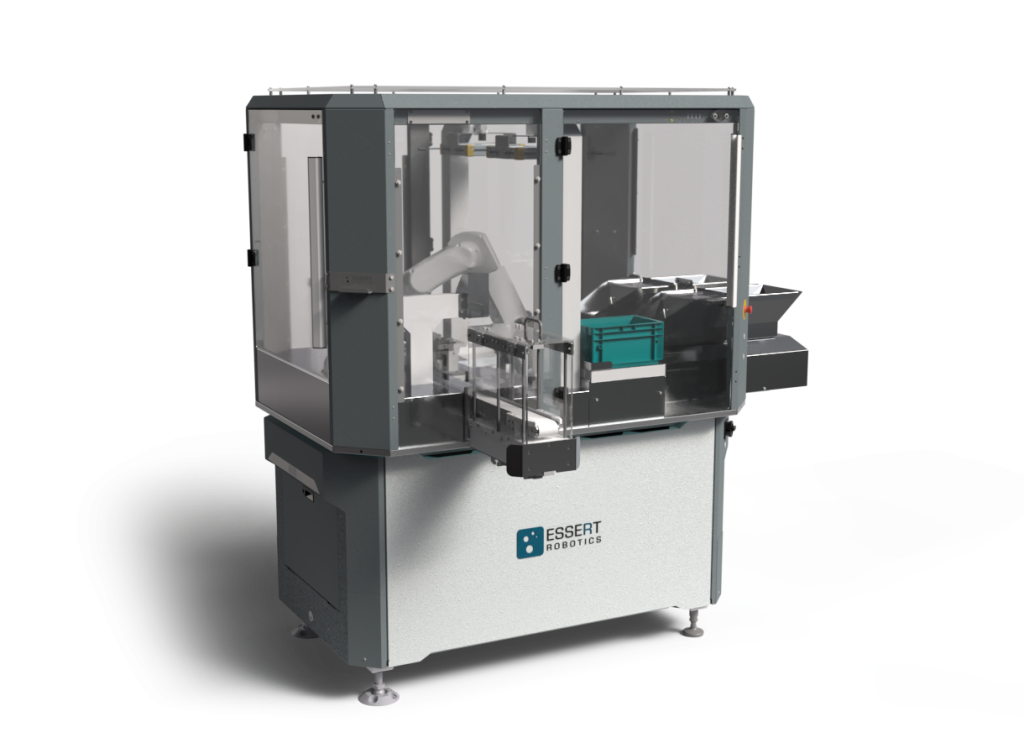
What is the Future of Robotics in the Pharmaceutical Industry?
The future of robotics in the pharmaceutical industry is poised for transformative advancements. From streamlining drug discovery processes through automated assays to enabling personalized medicine with adaptable manufacturing, robotics are becoming integral. The integration of artificial intelligence and machine learning further enhances efficiency and innovation in healthcare and pharmaceutical production.
ESSERT Robotics exemplifies this future with flexible and modular solutions, catering to evolving industry demands. Sustainability, compliance with regulations, and the overarching goal of enhancing patient outcomes define the trajectory of robotics in the pharma landscape.
Read more about robotics
Robots in manufacturing: revolutionizing production processes
Robotic manufacturing companies
Cobot – all you need to know about collaborative robots
What is an industrial robot?
Robotics: 7 facts you need to know
- https://www.grandviewresearch.com/industry-analysis/pharmaceutical-robots-market ↩︎
